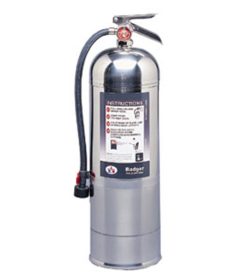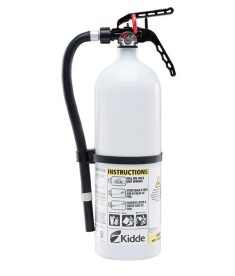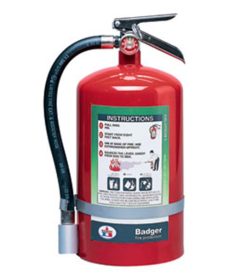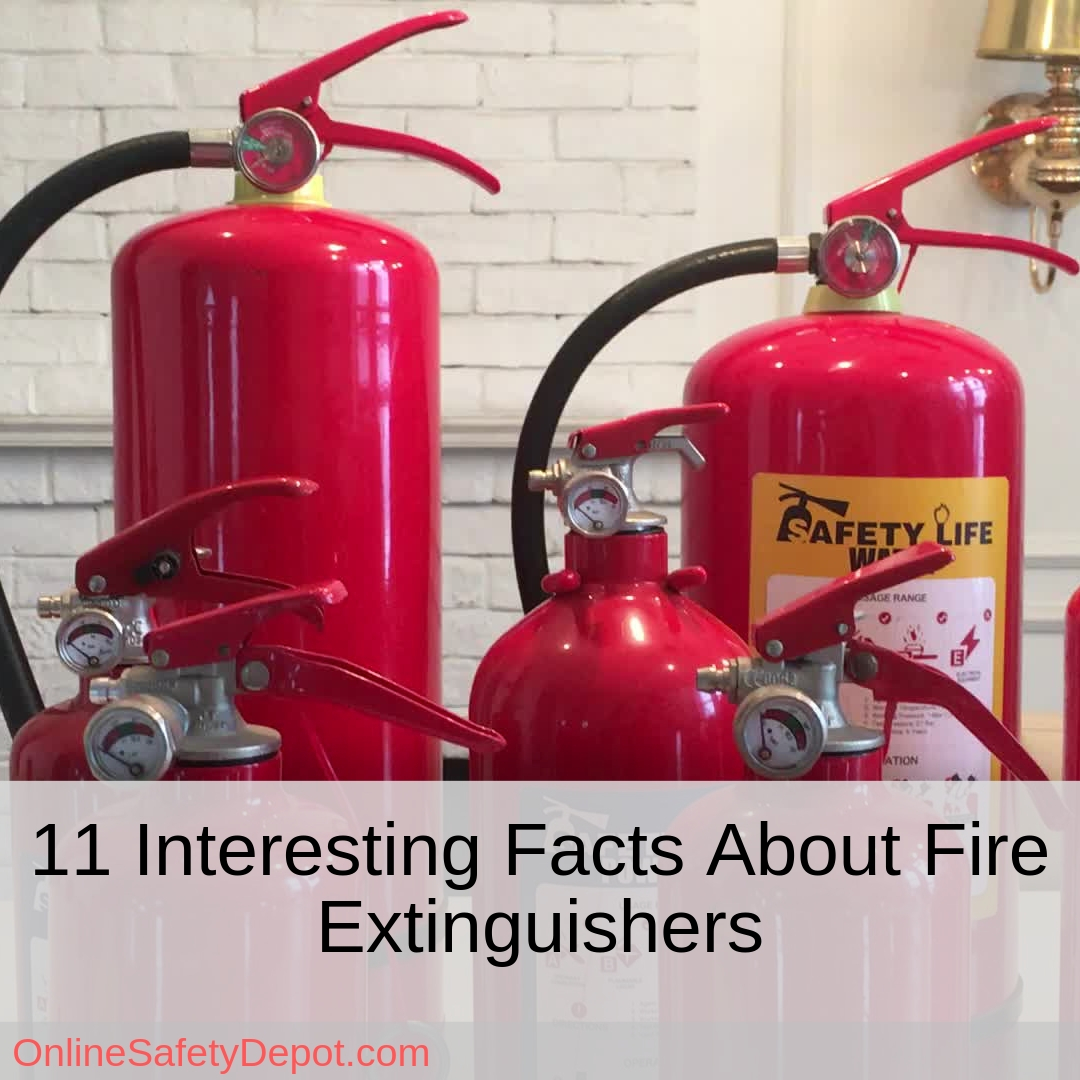11 Interesting Facts About Fire Extinguishers
Fire extinguishers are a part of our daily lives. Most homeowners will have one in their kitchen, landlords will have them inside their rental units for their tenants, store owners will have then placed in several places around the store to meet OSHA and NFPA standards and guidelines, and car owners may have them in the trunk of their cars.
With how integrated fire extinguishers are in our lives and how little the general public knows about fire extinguishers, I thought I would share with you 11 interesting facts about fire extinguishers.
1- The concept of a fire extinguisher has been around for a very long time. Two thousand, two hundred and nineteen years to be exact. Ctesibius of Alexandria invented a hand pump that, among other things, was used to pump water to extinguish fires.
It wasn’t until years later, when Ambrose Godfrey, a German chemist invented a fire extinguisher that used gunpowder and fuses to expel the water out of the “fire extinguisher”.
The modern fire extinguisher was invented in 1818 by a British Captain named George William Manby. The fire extinguisher was made from copper, held 3 gallons of extinguishing agent potassium carbonate solution (dry chemical), and contained compressed air.
2- Not all fire extinguishers are built the same. Fire extinguishers come in all sorts of shapes and sizes. The smallest fire extinguisher is a 1.5-pound portable fire extinguisher that can be fitted on ATVs or in the car, and the largest fire extinguisher is a 350-pound wheeled fire extinguisher that is designed for fighting fires on oil rigs and boat docks.
3- There are several different “brands” of fire extinguishers. Fire extinguishers are made by several different companies. Company will design extinguishers with a variety of components, delivery systems, agent solutions, and whatever unique features that can help them distinguish themselves from the competition.
4- There are several different types of fire extinguishers on the market today. In today’s world, fire extinguishers are used in a variety of places, and as such, they are designed to work in different settings. Here is a list of the types of fire extinguishers that are used today.
Dry Chemical Extinguishers are the most common type of fire extinguishers. They are found in homes, businesses, and public settings. Dry chemical fire extinguishers are not designed for fires that involve sensitive electrical equipment as the agent used in dry chemical fire extinguishers is not a “clean-agent” chemical and may damage the electrical equipment, and the dry chemical leaves a residue, which must be cleaned up after it has been discharged. These are:
– Multipurpose (ABC) Dry Chemical Extinguishers
– Ordinary Dry Chemical Extinguishers
– Purple K Dry Chemical (PKP) Extinguishers
– High-Flow Dry Chemical Extinguishers
Foam Extinguishers are designed for flammable liquid fires.
A Pressurized Water Extinguisher contains tap water, which is under pressure inside the fire extinguisher. These types of fire extinguishers are designed to be used on common combustible fires.
Loaded Stream Extinguishers are water extinguishers with an anti-freeze additive. Used for Class A fires.
Water Mist Extinguishers contain de-ionized water, which does not conduct electricity. These extinguishers are used for Class A fires.
Clean Agent Extinguishers use Halon 1211 or a halocarbon. These clean agent fire extinguishers leave no residue and are designed to be used on electronic equipment.
Carbon Dioxide Extinguishers are rated for flammable liquid fires but are also effective on Class C fires that involve sensitive electrical fires.
Class K Extinguishers contain wet chemical. They are commonly found in commercial kitchens for appliance fires involving cooking oil.
Dry Powder Extinguishers are designed for Class D fires, so they are intended for combustible metal fires only.
A Variety of Fire Extinguisher Types Are Available for Purchase at OnlineSafetyDepot.com
-
Product on sale
 Amerex® 30 lb Sodium Chloride Fire Extinguisher w/ Wall HookOriginal price was: $1,289.99.$998.80Current price is: $998.80.
Amerex® 30 lb Sodium Chloride Fire Extinguisher w/ Wall HookOriginal price was: $1,289.99.$998.80Current price is: $998.80. -
Product on sale
 Badger™ Extra Wet Chemical 2.5 gal Extinguisher with Wall HookOriginal price was: $486.23.$454.03Current price is: $454.03.
Badger™ Extra Wet Chemical 2.5 gal Extinguisher with Wall HookOriginal price was: $486.23.$454.03Current price is: $454.03. -
Product on sale
 Kidde Non-Magnetic MRI 5-Pound ABC Extinguisher – with Wall HookOriginal price was: $252.42.$241.48Current price is: $241.48.
Kidde Non-Magnetic MRI 5-Pound ABC Extinguisher – with Wall HookOriginal price was: $252.42.$241.48Current price is: $241.48. -
Product on sale
 Badger™ Extra Water Extinguisher 2.5 gal with Wall HookOriginal price was: $245.99.$235.99Current price is: $235.99.
Badger™ Extra Water Extinguisher 2.5 gal with Wall HookOriginal price was: $245.99.$235.99Current price is: $235.99. -
Product on sale
 Badger™ Extra 11-Pound Halotron® I Extinguisher with Wall HookOriginal price was: $1,799.99.$1,429.99Current price is: $1,429.99.
Badger™ Extra 11-Pound Halotron® I Extinguisher with Wall HookOriginal price was: $1,799.99.$1,429.99Current price is: $1,429.99. -
Product on sale
 Badger™ Extra Extinguisher 20-Pound ABC-Class with Wall HookOriginal price was: $365.12.$305.99Current price is: $305.99.
Badger™ Extra Extinguisher 20-Pound ABC-Class with Wall HookOriginal price was: $365.12.$305.99Current price is: $305.99.
Offshore Fire Extinguishers are designed to be used on oil rigs, boat docks, or marine settings. They have a special galvanized coating that prevents rust and damage from the harsh sea, sun, and salt environment that is common in those conditions. These extinguishers are available in dry chemical, and Halotron models.
5- Fire extinguishers save lives. Each year, it is estimated that thousands of lives are saved due to the quick and effective use of fire extinguishers. Whether a kitchen fire in the house, a car engine fire, storage warehouse fire, or a fire from caused by the fury of mother nature, fire extinguishers save lives.
6- Designed so that even kids can use them. Fire extinguishers are designed in such a way that anyone can use them, even kids. Outreach programs sponsored by OSHA and the NFPA have taught individuals from all walks of life and a large spectrum of ages to follow the P.A.S.S technique when using a fire extinguisher. See below:
P: Pull Pin
A: Aim at the base of the fire
S: Squeeze the Lever
S: Sweep from side to side
If you want to learn more about how to properly use a fire extinguisher to extinguish a fire, read our other article titled, “How to Operate a Fire Extinguisher”.
7- Fire extinguishers have become fashionable. Many homeowners and artist will use old classic fire extinguishers, now empty, as household decretive artwork. A quick search on Esty or Pinterest will show several redesigned fire extinguishers used as decoration in the home and even offices.
8- Fire extinguishers need to be inspected regularly. Fire extinguishers need to be serviced on a regular basis in order to comply with today’s safety standards and ensure that the fire extinguisher is in good working order.
9- Water won’t extinguish all fires. Water is great for extinguishing Class A fires (wood, paper, common combustibles) but should never be used on Class B, C or D fires.
10- Fires that involve sensitive electrical equipment require a specific type of fire extinguisher. Electrical fires (Class C Fires) especially the ones that involve sensitive electrical equipment, need to be extinguished using a specific fire extinguisher so that the agent doesn’t damage or destroy the equipment.
The best types of fire extinguishers to use when fighting a fire involving sensitive electrical equipment is the Halotron fire extinguisher and the Carbon Dioxide fire extinguisher.
11- AFO Fireball fire extinguisher. A new type of fire extinguisher that is on the market today is the AFO Fireball fire extinguisher. It is different in that it is not a canister configuration that holds the agent under pressures and discharges it when activated via squeezing the hand lever and pointing the hose or nozzle toward the base of the fire. As such the “PASS method” is not utilized. Rather, the AFO Fireball works by throwing an agent containing ball directly into the fire where it will explode, sending the extinguishing agent flying in all directions to effectively extinguishing the fire.

